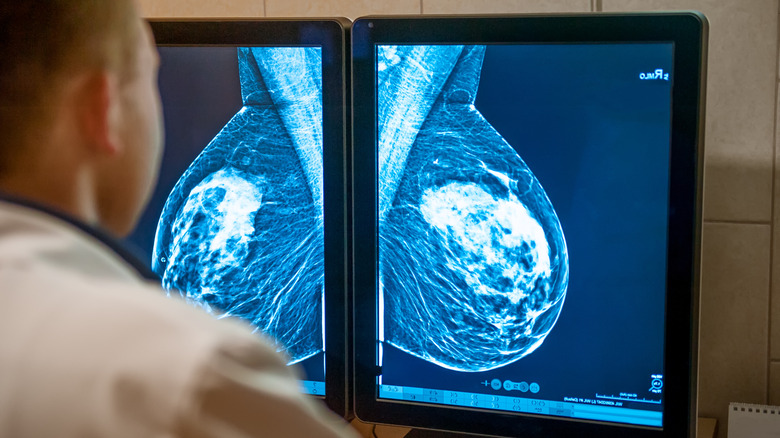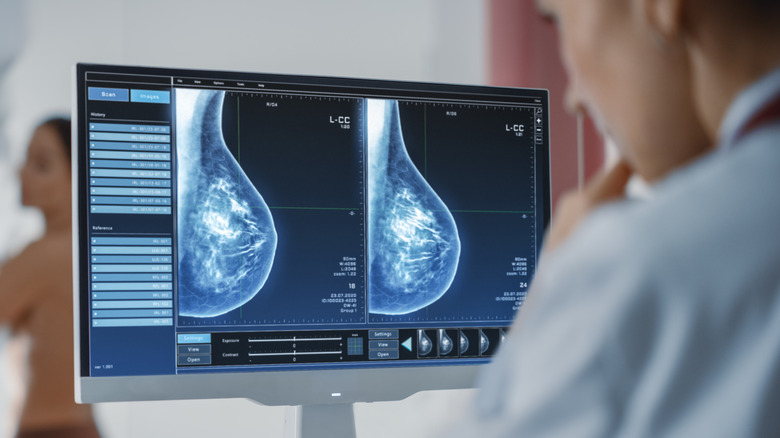What Your Mammogram Can Tell You About Your Health
If you've ever had a mammogram, you might have looked at your report and been more than a little confused. From terminology to images, your results might have left you with even more questions than you had before. While a radiologist will ultimately interpret your results for you, it can still be useful to understand some terms.
A mammogram is a type of X-ray of the breast, performed either as a preventative screening or used as a diagnostic tool (via American Cancer Society). It involves compressing the breast tissue between two plates while images are taken from top-to-bottom and side-to-side. A radiologist will look at the images and give results to your doctor using a scale called the Breast Imaging Reporting and Data System (BI-RADS), according to Healthline. The results will be on a scale from zero to six, with one being completely normal and six indicating that a cancerous tumor has been found (Zero means that you require another X-ray). Mammograms look at fatty tissue and fibroglandular tissue in the breast, screening for any abnormalities, such as calcification or tumors.
Experts differ on guidelines for breast cancer screenings, but the American Cancer Society recommends that if you are at average risk and between the ages of 40 and 44, you have the option to start screening every year. Between 45 and 54, you should screen each year. If you're 55 or older, you have the option of screening every other year.
Key terms in a mammogram report
A mammogram report will generally include a few terms that are important for you to know, according to Woman's Day. Density refers to the amount of fibroglandular tissue in relation to the amount of fatty tissue. The more fibroglandular tissue you have, the denser your breasts are. This is normal but means you have a higher risk of breast cancer and can make it harder to spot abnormalities, according to the American Cancer Society.
Mammograms will detect calcifications or deposits of calcium that may not indicate anything cancerous (via Woman's Day). Microcalcifications (or clusters of calcium deposits), on the other hand, might encourage your doctor to request a biopsy. Parenchymal asymmetry means that an area on one breast didn't match the corresponding area on the other. This could be due to an issue with the plates or just mean that your breasts aren't perfectly symmetrical. Architectural distortion indicates that something didn't appear normal, and a radiologist will determine what's contributing to the distortion.
If you see a mass or tumor on your report, it's understandable that you might be instantly worried, but this doesn't always mean cancer. A mass can be benign, just like a mole, while a spiculated focal mass can be cancerous. You and your doctor can discuss your next steps after receiving the results of your mammogram.


